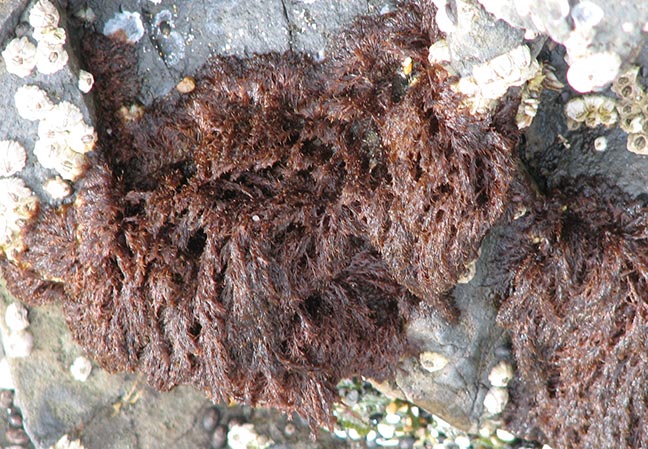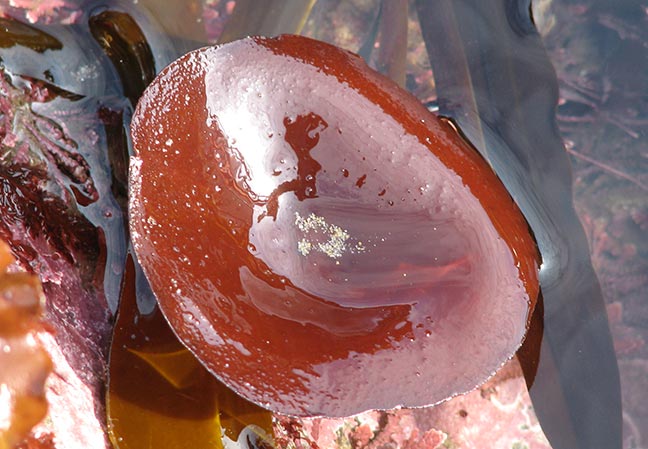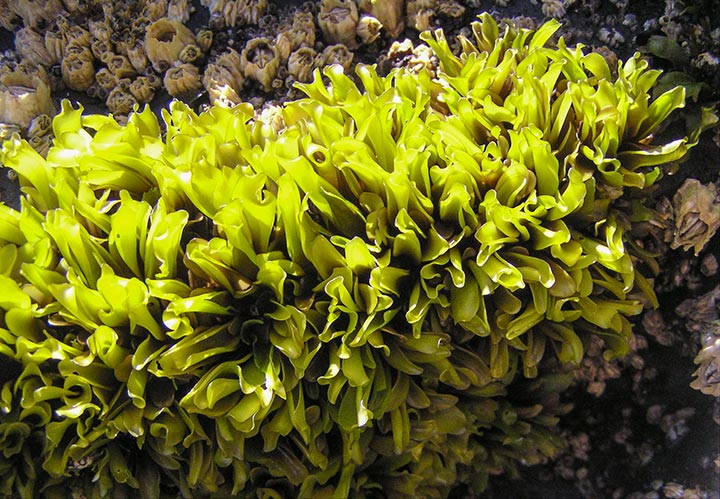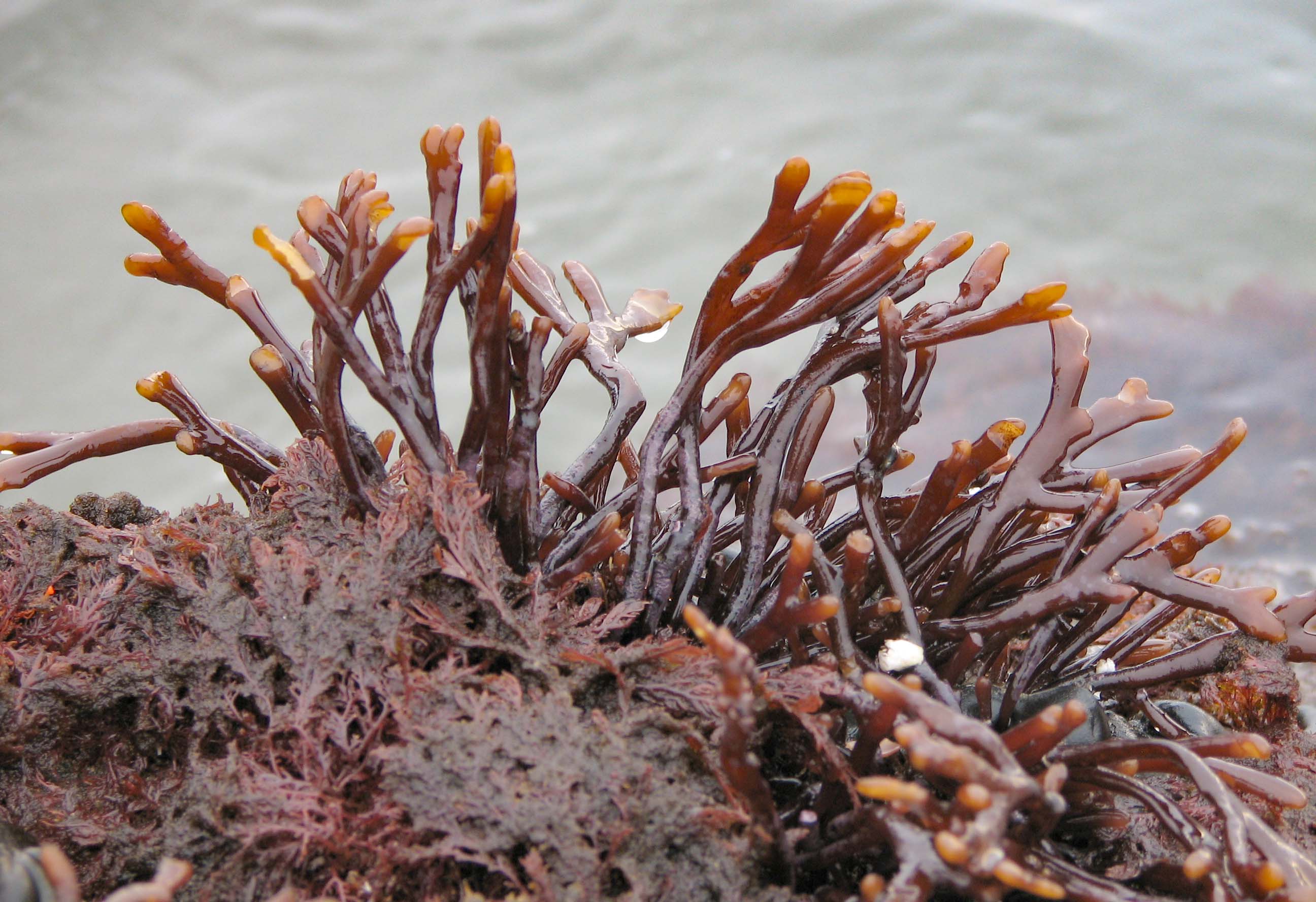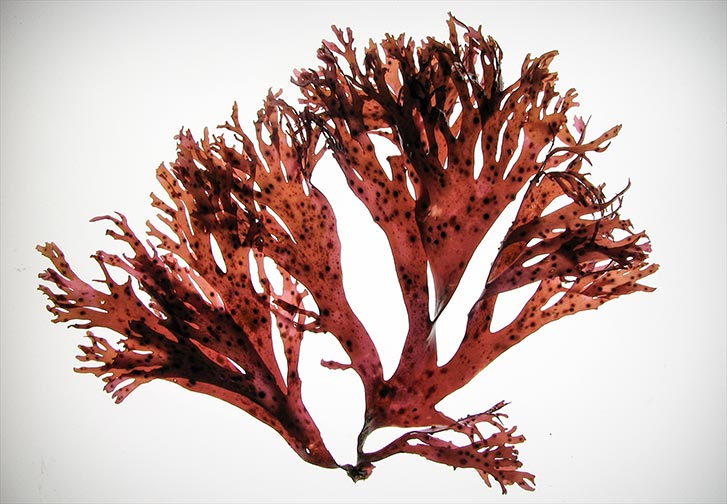Polysiphonia hendryi var. deliquescens
Poly
Alaska to California
Family Rhodomelaceae
As metioned above, there are several varieties of Polysiphonia hendryi. This one, P. hendryi var. deliquescens, is common near the entarace of Netarts Bay, just below the Terrimore Motel. Branches are several inches long, lacy, and described in the keys as "lax", that is there is no stiffness to them and the droop when collected.




















